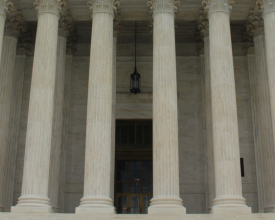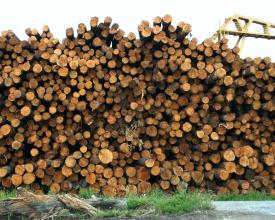HPVA® eNews - EPA Withdraws Final Formaldehyde Rule
From all of us at HPVA® and HPVA Laboratories®, we thank you for your enthusiasm, support, and commitment in 2017.
We wish you and your family a very merry Christmas, a wonderful holiday season, and a happy and prosperous New Year.

The EPA announced that it has withdrawn the direct final and proposed rule to update the composite wood products formaldehyde standards published on October 25. In the rule, EPA had amended the testing requirements establishing correlation between approved quality control test methods and chamber test methods. After receiving adverse comment on the proposed rule amendments, the decision was made to withdraw.

China has fundamental economic challenges: resource constraints, a rapidly aging workforce, and a terrible record of debt accumulation, states Dr. Derek Scissors, a recent HPVA® keynote speaker. To improve, China would need to return to the pro-market reform of 1978-2002 that it abandoned in 2009, upgrade rural education, and conduct systemic financial deleveraging. Even with these measures, China is not likely to become a rich country.

NAHB spokespeople and more than 50 builders visited Washington to push to keep a homeownership tax credit in tax reform legislation. Their arguments suggest dire outcomes: that home values would be threatened, that this would act as a tax on homeownership, and that it would force younger and middle class buyers out of certain markets. The American Enterprise Institute, however, believes that the tax reform will benefit the middle class, as an increase in the standard deduction will, in most cases, be greater than the mortgage interest deduction they now receive.
Additional Sources: AEI, November 9, 2017.

U.S. demand for kitchen cabinets is expected to grow 5.9% per year to $17.1 billion in 2021. Experts state that tall kitchen cabinets, the fastest growing style, should grow 7.7% each year to reach $3.2 billion in 2021. Tall cabinets are becoming more and more popular as they provide additional storage and can make smaller kitchens appear larger.

In a 4-0 vote on December 7, the U.S. International Trade Commission ruled that Canadian subsidies of softwood lumber injure the U.S. lumber industry. Duties on Canadian softwood lumber have been effect since earlier this year. The Forest Products Association of Canada said that the higher price of wood and insatiable demand from U.S. builders minimizes the impact of the duties. Demand for Canadian softwood lumber in the U.S. fell by 6% in the first 9 months of 2017. In contrast, Chinese import volumes have grown 21% vs. year ago.
Additional Sources: The Canadian Press, December 5, 2017; Wood Resources International.






